Time:
In a world of diverse investment areas, medical waste disposal project is standing out like a dark horse. The growth of healthcare organisations, the expansion and ageing of the population, urban management and the advancement of environmental policies are all factors that will push healthcare waste management into the spotlight.
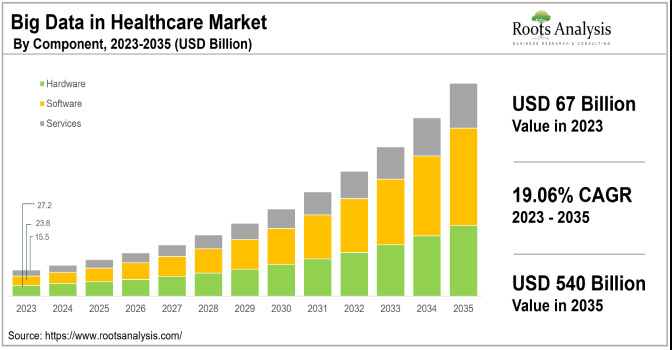
And for the time being, the number of investors looking at healthcare waste management as a potential investment option is relatively low. This article will tell you, what medical waste disposal is? Why is now the time to invest? Soon you'll be an expert in this industry, so let's go!
Feeling complicated? But don't want to miss this opportunity? Contact us directly at [email protected]
As defined by the International Health Organisation, medical waste and by-products include the various substances described below:
According to the International Health Organisation note, the main sources of medical waste are:
In terms of hazardous waste generated per hospital bed per day, the average for high-income countries amounts to 0.5 kg; the average for low-income countries amounts to 0.2 kg.
However, low-income countries often do not distinguish between hazardous and non-hazardous waste, so the actual amount of hazardous waste is much higher.
According to the International Health Organisation, medical waste may pose health risks as well as negative environmental impacts.
Medical waste contains potentially harmful microorganisms that can infect hospital patients, healthcare workers and the general public. Other potential infectious risks include the introduction of drug-resistant microorganisms from healthcare facilities into the environment. Health risks associated with waste and by-products also include:
Taking sharps injuries as an example, approximately 16 billion injections are performed worldwide each year. However, not all needles and syringes are disposed of properly afterwards, raising the risk of injury and infection and creating opportunities for reuse.
In 2010, unsafe injections were still responsible for up to 33,800 new HIV infections, 1.7 million hepatitis B infections and 315,000 hepatitis C infections. Individuals who experience needlesticks from infected patients have a 30 per cent, 1.8 per cent and 0.3 per cent risk of being infected with hepatitis B virus, hepatitis C virus and HIV, respectively.
Additional hazards may result from the cleaning of waste disposal sites and the manual sorting of hazardous waste from medical facilities. These practices are common in many regions of the world. Waste handlers are at immediate risk of needle stick injuries and exposure to toxic or infectious substances.
The handling or disposal of medical waste may release pathogens and toxic contaminants into the environment, thus indirectly posing health risks.
Alternatives to incineration and in situ burial are available, such as autoclave, microwave sterilization and other means.
With the above information on medical waste, let's talk about "Medical Waste Disposal Projects".
Simply put, medical waste disposal is the process of killing or eliminating pathogenic microorganisms in medical waste through medical waste disposal equipment with specialized technology, so that it eliminates potential infectious hazards. And ensuring the safety of the process with appropriate plant, local rules, standardized management and monitoring.
As well as implement sustainable reuse and recycling measures (where permitted by local laws) to reduce the impact on the environment. At the same time, staff are trained to comply with waste management best practices to ensure public health and environmental safety.

Investing in medical waste disposal projects is a key area now and in the future. According to the above, it is easy to see the following reasons:
With the growth of the global population and the advancement of medical technology, and with the aging of the population, epidemics and other issues, the amount of medical waste generated will only increase. In the healthcare industry, we observe that, the demand for healthcare services is growing due to the growing importance of physical fitness among young people and the increasing proportion of older people in the population.
Over the past five years, the healthcare industry has grown at an annual rate that is second only to information technology, which ranks first, and finance, which ranks second. In addition, prescription drug spending has grown by 9.1 per cent in recent years. This means that the healthcare sector alone generates a very large amount of medical waste. This includes infectious waste, injurious waste, and so on. To name a few, the medical waste disposal industry is in great demand and is highly profitable.
Moreover, the negative fluctuation of earnings after investing in medical waste treatment projects is small. Most of the healthcare organisations do not have the ability to handle medical waste alone, those healthcare organisations will choose to entrust some companies to handle the medical waste to meet the legal standards and protect the health of their employees. Therefore, when the output of medical waste is stable or gradually increasing, the income of the medical waste treatment company is also stable or even gradually increasing.
With the rising global awareness of environmental protection, government and corporate regulations and standards for medical waste treatment are becoming more and more stringent. Investing in efficient and safe medical waste treatment facilities and technologies not only helps to comply with regulations, but also ensures public health safety, improves environmental quality, and protects the health of natural resources and ecosystems.
Sustainable development has become a mainstream trend in the global economy, and more and more companies and investors are focusing on implementing ESG principles in their operations. Investing in medical waste disposal projects not only helps to reduce the environmental footprint, but also helps to enhance corporate social responsibility image and brand value.
In conclusion, investing in medical waste disposal projects is not only a business opportunity, but also an important step towards being responsible for future health and the environment. With the increasing global demand for healthcare services and growing environmental concerns, investment in this sector is set to remain stable and grow in the long term, with positive social and environmental impacts. Therefore, investment in medical waste treatment projects is not only in line with economic interests, but also in line with the general trend of global sustainable development and ESG concepts, bringing double returns to investors and society.
More customers are asking for technical details. Whenever they talked about their reasons for choosing us, they say it's not only because their local area encourages this more environmentally friendly method of disposal, and the legal requirements for the industry (in terms of premises, licences and emissions) are very stringent, but also because of the local social context.
In Southeast Asia, the subject of "new waste incinerators" has been controversial in Malaysia. In Indonesia, medical waste must by law be incinerated or sterilized. However, of the more than 3,000 hospitals in Indonesia (2021), only 4% have licences to operate incinerators. This is urgent. These hospitals will be looking for new alternatives.
In Europe, countries generate 2.1 billion tonnes of waste per year. A decade or so ago, European countries used to dispose of this waste by incineration. Nowadays, due to the academic debate on the "fight to reduce dioxin and furan emissions", there is a gradual shift towards environmentally friendly waste management.
Medical waste disposal is on the right track all over the world, and there is no doubt that healthcare-related services will grow in the future. For every country, choosing cleaner and low emission technologies is inevitable. So, you should realize it now.
As we mentioned, the number of investors looking at healthcare waste management as a potential investment option is small and the level of competition is not very strong. But it is only for now.
As a medical waste disposal equipment manufacturer and project investment operator, LI-YING has provided medical waste microwave treatment equipment for 300 cities and regions, invested in and operated 19 medical waste disposal projects (The average profit margin of these facilities using our equipment is 30%-50%.), and accumulated rich experience in medical waste management, which allows Li-Ying to provide you with a detailed medical waste disposal project design plan. This includes professional project design drawings, which clearly show the layout of the medical waste microwave sterilization equipment and the installation plan of the supporting facilities. Li-Ying will consider your actual needs, combined with the characteristics of the facility, to ensure the efficient operation of the equipment and compliance with environmental protection standards at the lowest investment and operating costs, to provide a stable and reliable solution for your waste management.
To learn more about our solutions, just contact us and we will present the case studies to you.
Li-Ying is the leader in microwave sterilizers. Microwave sterilization technology has more forward-looking advantages. Eco-friendly, safe, easy, and low energy cost compared to other technologies. And we have 10 years of R&D experience on it!
LI-YING, a deep-rooted player in the medical waste disposal industry, has a 132,000 square metre plant. And currently develops and markets the following product series:
Medical Waste Disposal Unit (MDU series) is a microwave and steam treatment unit with shredder for the environmentally sound treatment of medical waste. The range of treatment includes infectious, traumatic and pathological medical waste.
Suitable for the on-site eco-friendly disposal of medical waste in small and medium-sized hospitals and clinics.
The Li-Ying Medical Waste Disposal Vehicle (MDV) is a vehicle-mounted mobile sterilization station with an improved internal layout designed to meet the demands of mobility. It is ideal for medical waste disposal fleets. It is adaptable to emergency and support needs.
Medical Waste Transfer Vehicle (MTV) is ideal for medical waste disposal plant and collection fleets. The high standard of manufacturing requirements ensures the safety of the medical waste transport process. There are also UV lamps, temperature controllers and disinfectant sprays to control bacterial growth.
Products under the range are available in different models. For a more detailed product description, please click on Details.
LI-YING, as a reliable trade partner, has been providing professional, responsible and long-lasting after-sales service to our customers for a long time.
LI-YING provides installation and commissioning services for customers. For example, LI-YING's after-sales team has recently carried out corresponding services in South America.
LI-YING provides customers with professional training services for the equipment. For example, recently LI-YING has carried out communication training with African customers.
LI-YING provides customers with team staffing consulting services. For clients who are new to the medical waste disposal industry and are not sure what kind of team they need to have, LI-YING will provide a list of suitable positions and their numbers according to the size of the client's company and professional experience.
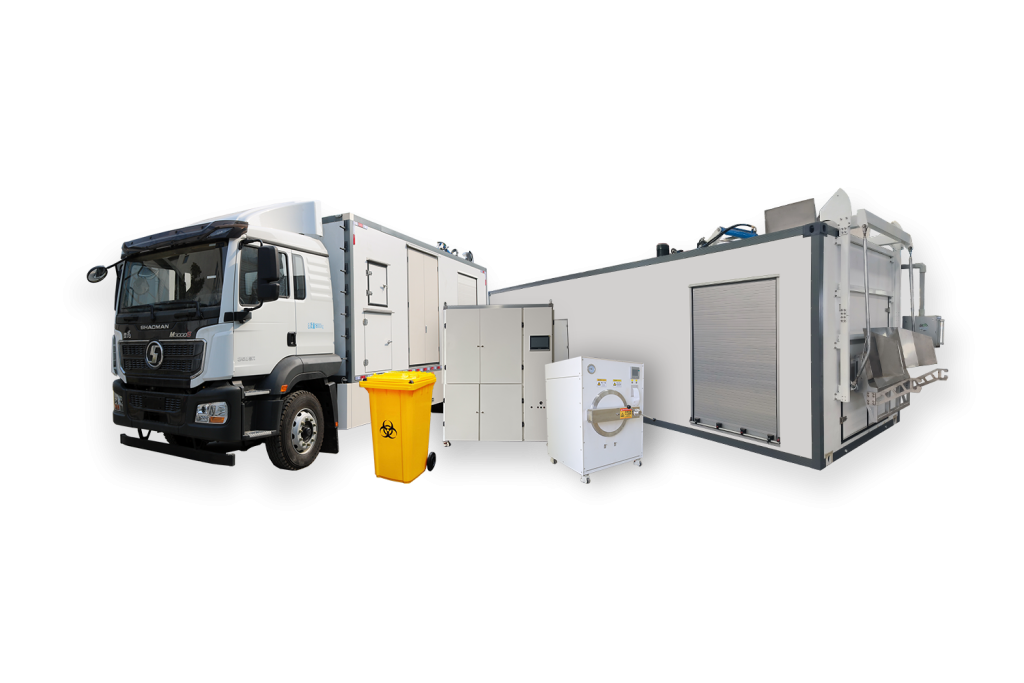
Investment in medical waste disposal projects is not only a profitable venture, but also contributes to the enhancement of medical services and environmental protection. This aligns with the contemporary trend of sustainable development. Effective medical waste disposal mitigates the risk of infectious disease transmission, while also reducing the detrimental impact on the environment and facilitating the efficient utilization and recycling of quality resources.
If you have an idea about this, you can choose LI-YING to be your partner. As a quality supplier of medical waste disposal equipment, we not only provide customized waste disposal solutions, but also focus on microwave disinfection technology and quality assurance. Through our professional services, we can ensure that the equipment meets the requirements of high performance and safety.
Choosing LI-YING means choosing excellence and reliability, adding confidence and success to your medical waste disposal project!!
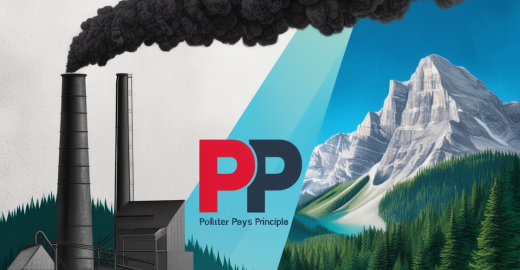
What is the Polluter Pays…
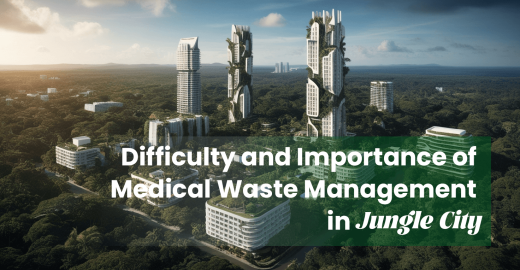
Forests and wetlands are …
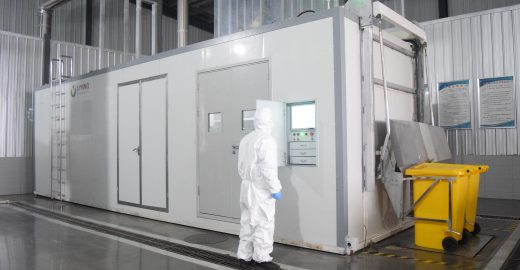
Of course! LI-YING has ex…
PDF Request